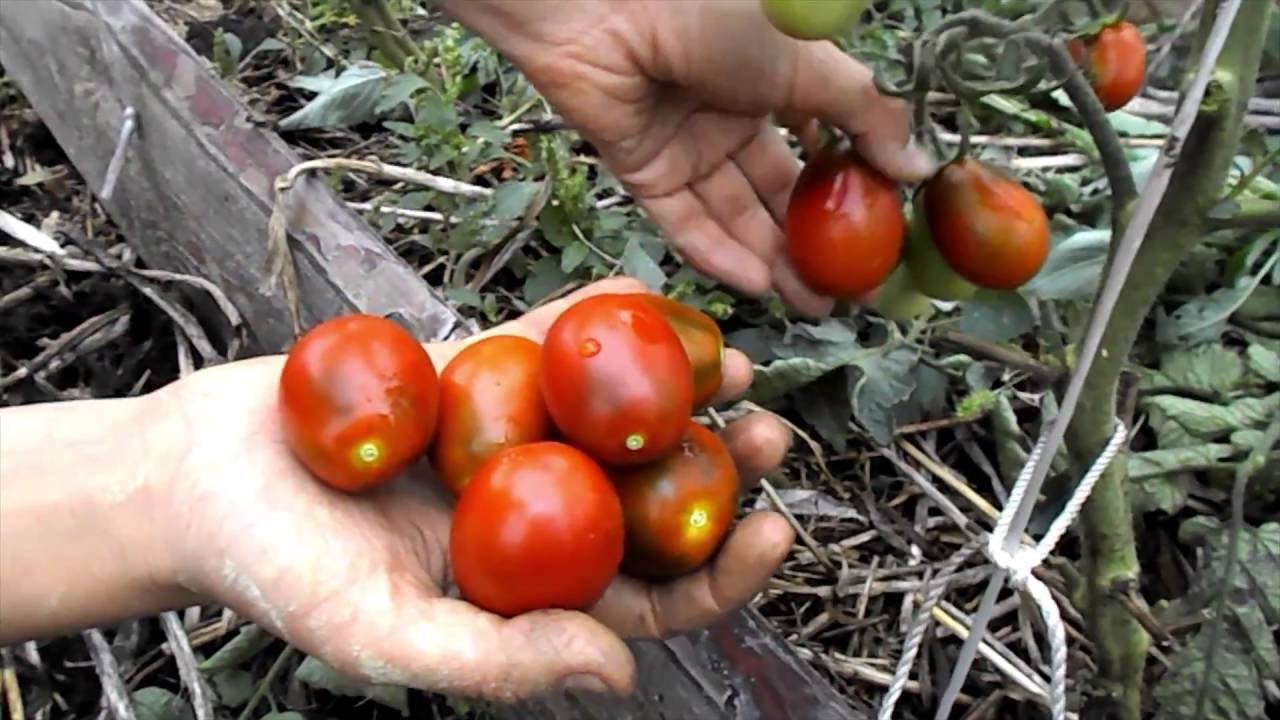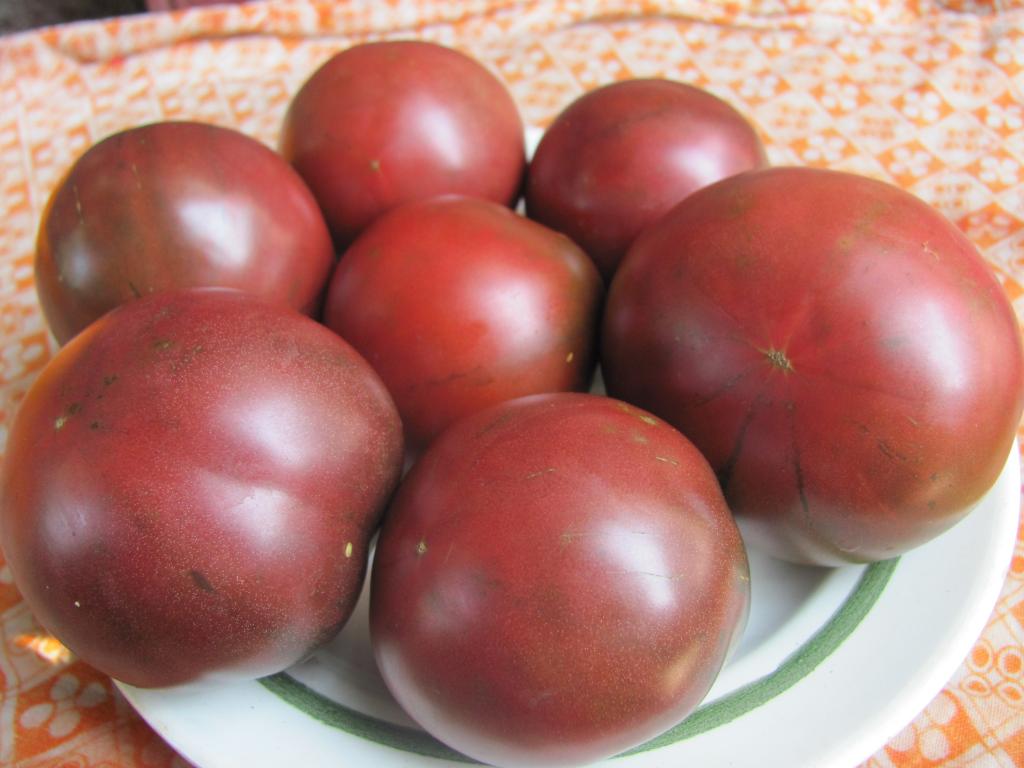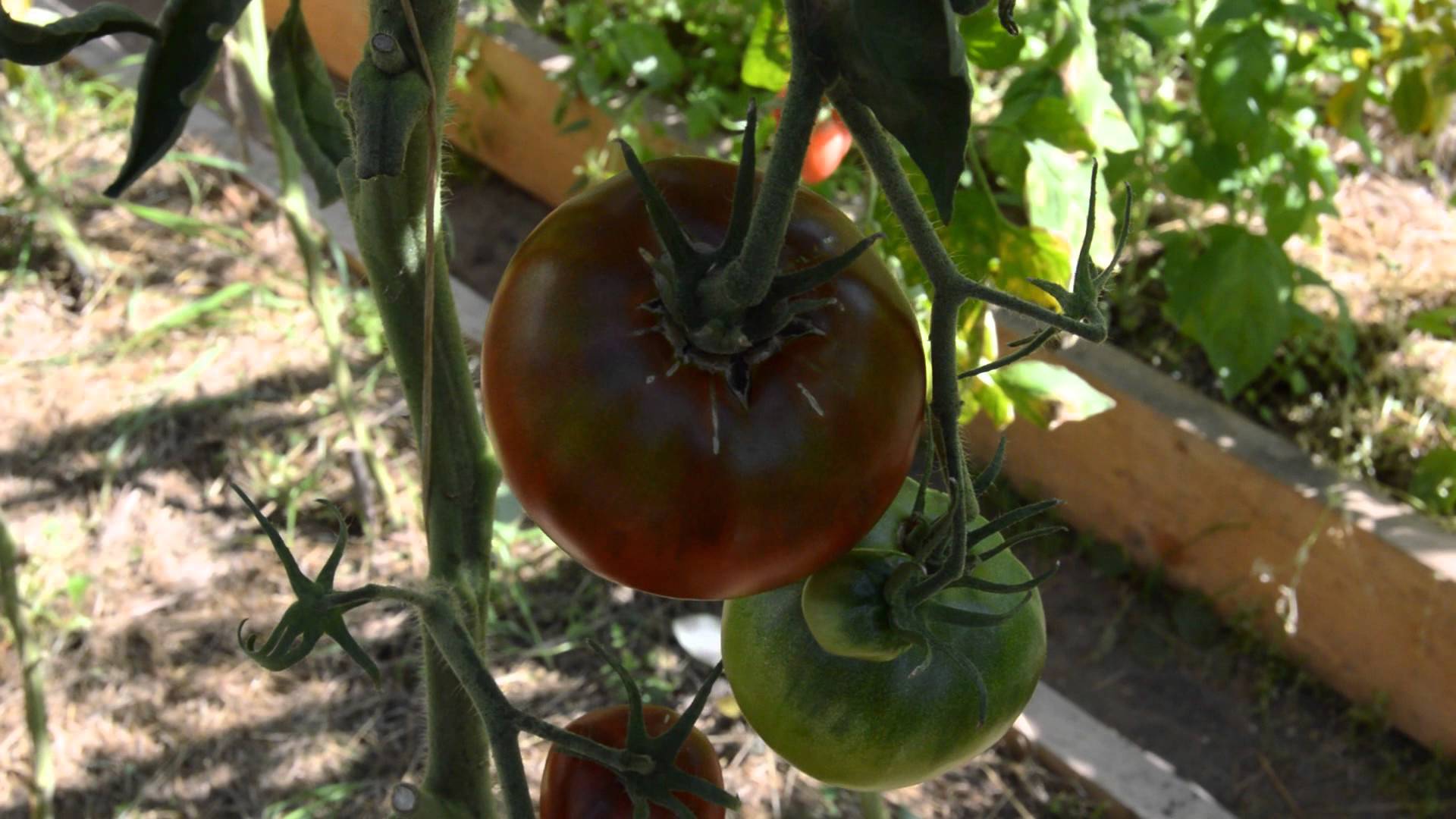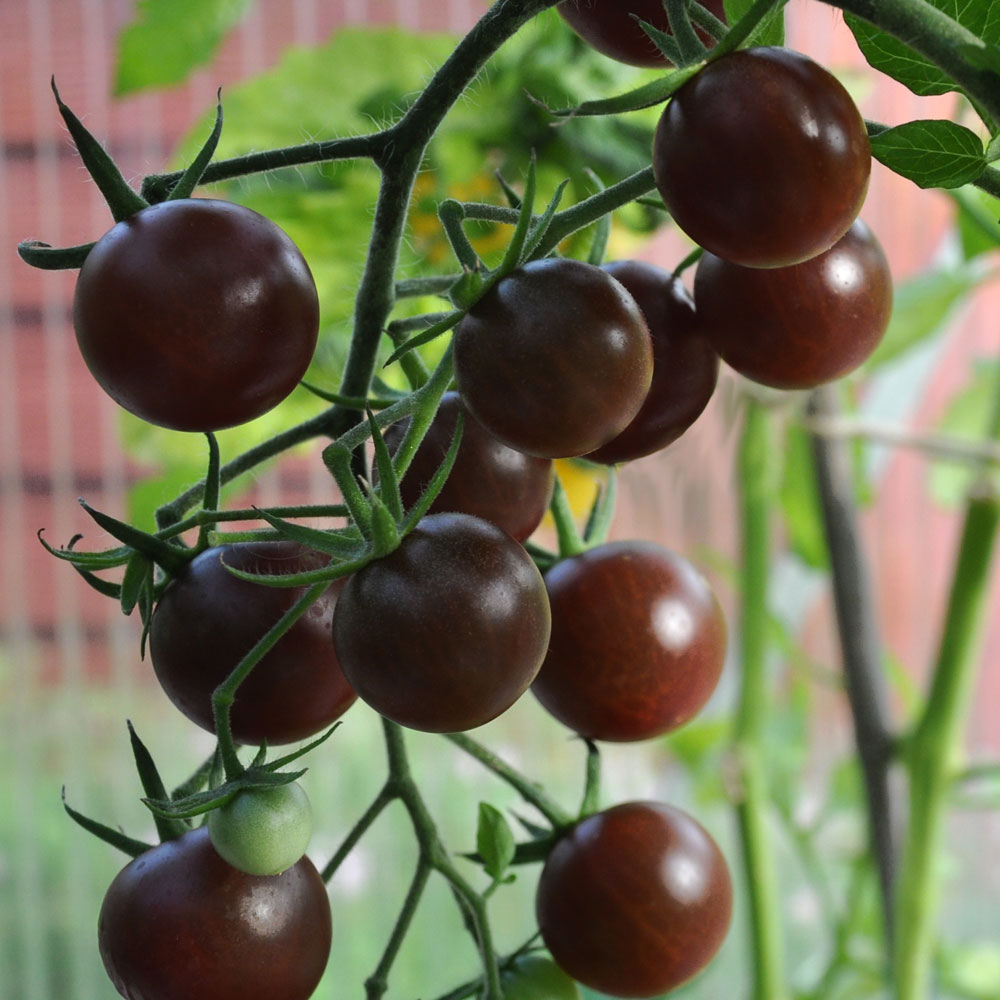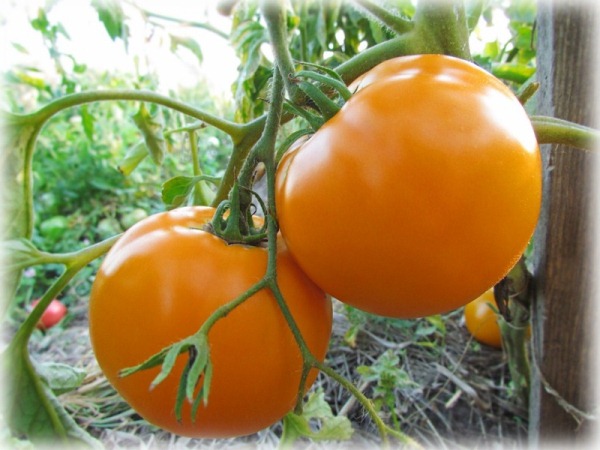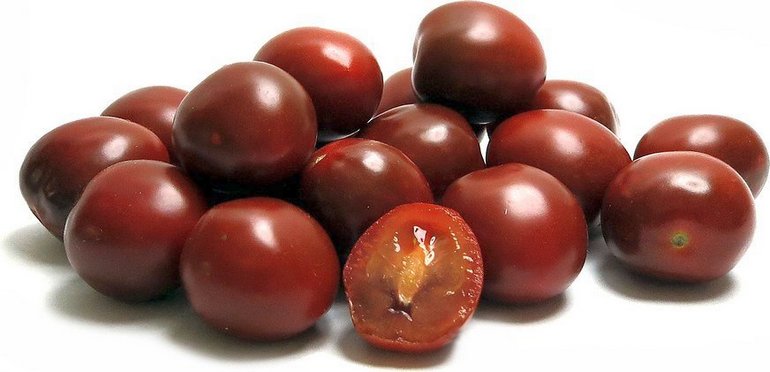Content:
Black (brown) tomatoes have been grown in Russia since the second half of the last century. They are distinguished by their unusual color, pleasant rich taste and the presence of many useful properties. Black tomatoes are obtained as a result of conventional breeding, by crossing wild and garden varieties.
Characteristics and features of the variety
Black tomatoes contain anthocyanins - substances with anti-inflammatory and tonic effect. The pulp of black tomatoes contains antioxidants that prevent the growth of cancer cells, normalize high blood pressure, lower cholesterol, and increase male strength.
Black tomatoes are good for:
- to improve appetite;
- for weight loss, speed up metabolism;
- have a beneficial effect on vision;
- reduce swelling;
- strengthen the immune system.
Disadvantage of black tomatoes: not all varieties are suitable for canning due to their thin skin. Harmful use can be if a person is allergic to tomatoes.
The abundance of varieties makes it difficult to choose when buying seeds. It is worthwhile to familiarize yourself in advance with the various varieties and their features.
Black tomato varieties table:
| Variety name | Description of appearance | Parameters, care features |
|---|---|---|
| Chocolate bunny | Non-hybrid plant, cherry variety. | Strong stems grow up to 125 cm, it is necessary to pinch and tie up. Fruits are small, weighing 35 - 50 g, the peel does not burst when canning. |
| Fruiting begins in the second half of July. | ||
| Black elephant | Fruit weight up to 200 - 400g, bush height up to 1.5 m. | Medium early, high-yielding variety, grown outdoors and in greenhouses. |
| Suitable for fresh salads. | ||
| Black zebra | Fruits are sweet (14% sugar) of dark burgundy color with dark green stripes, weight up to 120g. Suitable for canning. | Mid-season variety, always gives a rich harvest, unpretentious in care, resistant to diseases. |
| Paul Robson, | An old variety of black tomatoes, bred 70 years ago. | Bushes are tall, there are many leaves. Need cropping. Grows in greenhouses. |
| Large fruits weighing more than 300g. | ||
| Gypsy | Stunted, bushes up to 1 m, with round brown-red fleshy fruits weighing up to 100 - 180 g. | The fruits contain a variety of beneficial minerals and vitamins. Not very fruitful, but tasty. |
| Black Prince | Popular variety, sweet fruits up to 300 g, tall bush above two meters. | A garter is required, plant care is simple - frequent watering and treatment against diseases is not required. |
| Black pear | Mid-season variety, pear-shaped fruits with dense pulp weighing up to 100 g. Bushes grow up to 1.7 m. | A must-have garter. |
| The fruits are good fresh and for harvesting, they tolerate transportation well. | ||
| Viagra | Medium early variety, disease resistant. It has a beneficial effect on the male body. | Grown in open ground and in greenhouses. |
| De Barao black | Late-ripening variety, harvest 120 days after germination. Fruits 80 g, ovoid, tasty fresh and canned. | A bush 2 m high, formed into 2 - 3 stems, tied up and pinned. |
| Black Moor | Grown in foil greenhouses. Mid-season variety, fruits like plums, chocolate color, tasty fresh and canned. | The bush grows up to 100 - 120 cm. Requires a garter, formation and removal of stepsons. |
| Cherry Negro | An early ripe hybrid, fruit like an egg, brown with green touches up to 30g, tasty, canning. | Good fruit set in unfavorable conditions, the harvest is removed by brushes. |
| Tomato Black Russian | Mid-season (115 days before ripening), fruitful. The fruits are delicious, sweet, for salads. | High-yielding, tall, grows in open beds and in a greenhouse. |
| Tomato Negro | Mid-season, fruitful. Fruits up to 120g, sweet, juicy. Delicious fresh, delicious winter preparations - tomato juice, pasta, ketchup. | Grows in greenhouses and outdoors. Bush up to 120 cm. Tying and pinching is obligatory. |
The color of the tomatoes is played out in the names: the head of a Negro, a Negro woman, a Negro, a tomato Negro, Paul Robson. This is a variety bred 70 years ago. Named after an American singer famous in the Soviet Union.
Tomatoes appear black or brown when exposed to sunlight. If the light is low, then the color of the tomato fruit will be lighter or turn red.
Agricultural technology of cultivation
The cultivation of black tomatoes is not much different from conventional agricultural techniques. Black tomato grows well in the greenhouse and in the open field. When it gets cold, open beds are covered with a film.
In the greenhouse
In the fall, you need to improve the land in the greenhouse, remove all plant debris along with pests and harmful microbes. If there were cases of plant diseases in the greenhouse, it is necessary to change the soil: remove a 30 cm layer of soil away from the greenhouse. Treat the surface of the ground in the greenhouse with fungicides and use a sulfur stick.
The new healthy soil layer should contain:
- fertile land;
- peat;
- river sand;
- compost;
- rotted manure.
In the open field
The garden is also prepared in the fall. Dig a shovel onto the bayonet, adding organic matter (rotted manure, compost) 6-8 kg per square meter.
To get a harvest earlier, warm beds are made 2 - 3 weeks earlier.
From hypothermia to planting seedlings, cover the beds with a film.
Preparing seeds for planting
Many black tomatoes are hybrids. Seeds are purchased every year, when buying, you need to familiarize yourself with the characteristics of the variety, its description, care features, and harvest time.
The purchased seeds of black tomatoes are germinated on a damp napkin, making sure that they do not dry out.
Place the prepared soil in a container, make shallow grooves on the surface. With tweezers, select the seeds that have hatched and plant each seed in the ground at a distance of 1.5 - 2 cm. Then cover with foil or glass. After 7 to 8 days, the seedlings should emerge.
Watering the seedlings is moderate and careful, only with water at room temperature. The ground must be moist, but not wet, otherwise the seedlings will get sick with a black leg.
When the first true leaves appear, open the plants by pinching the central root for proper root growth.
Transplanting
In May, seedlings are planted in a greenhouse. After 20 days, black tomatoes are fed for the first time with nitrophobic. The second time - after the appearance of the second flower brush with chicken droppings. The third top dressing - after the third brush, with mineral fertilizer. In a week and a half - the fourth, organic.
Tomatoes need superphosphate. With a lack of it, the plants become blue-green and will grow worse. The following hood is recommended: a handful of superphosphate is poured with boiling water overnight. In the morning, the solution is drained and the plants are watered.
With a lack of potassium, fertilize with ash.
Nitrogen fertilizers must be strictly dosed.If fed too abundantly, the green mass suppresses flowering. If there is not enough nitrogen, the stems grow thin, the leaves - small, the flowers crumble. It is necessary to feed with chicken manure, which contains many substances that are useful for bushes and fruits.
Black tomatoes grow better with organic feeding.
The agricultural technology for growing any tomatoes is almost the same. Differs in the timing of the main stages of care and harvest. These processes are associated with the temperatures of the region.
Bushes of black tomatoes of any size need to be tied up, stepsons and bottom sheets removed. Removal and trimming should be done carefully with a sharp knife. Thin-skinned black tomatoes should not lie on the ground or touch fallen leaves. If the stems grow too tall, it is recommended to cut the top off. At the top, the crop will not ripen, but it will take nutrients from the lower fruits.
The fruits of black tomatoes are delicious fresh, stewed, boiled, baked. Some varieties have a thin skin and are not suitable for rolling as a whole. They can be harvested in the form of tomato juice, ketchup, as part of winter salads with bell peppers and other vegetables.
And therefore summer residents began to grow black tomatoes more often on their plots. Experienced gardeners test different varieties of black tomatoes and make their own collection of their favorite tomatoes.
